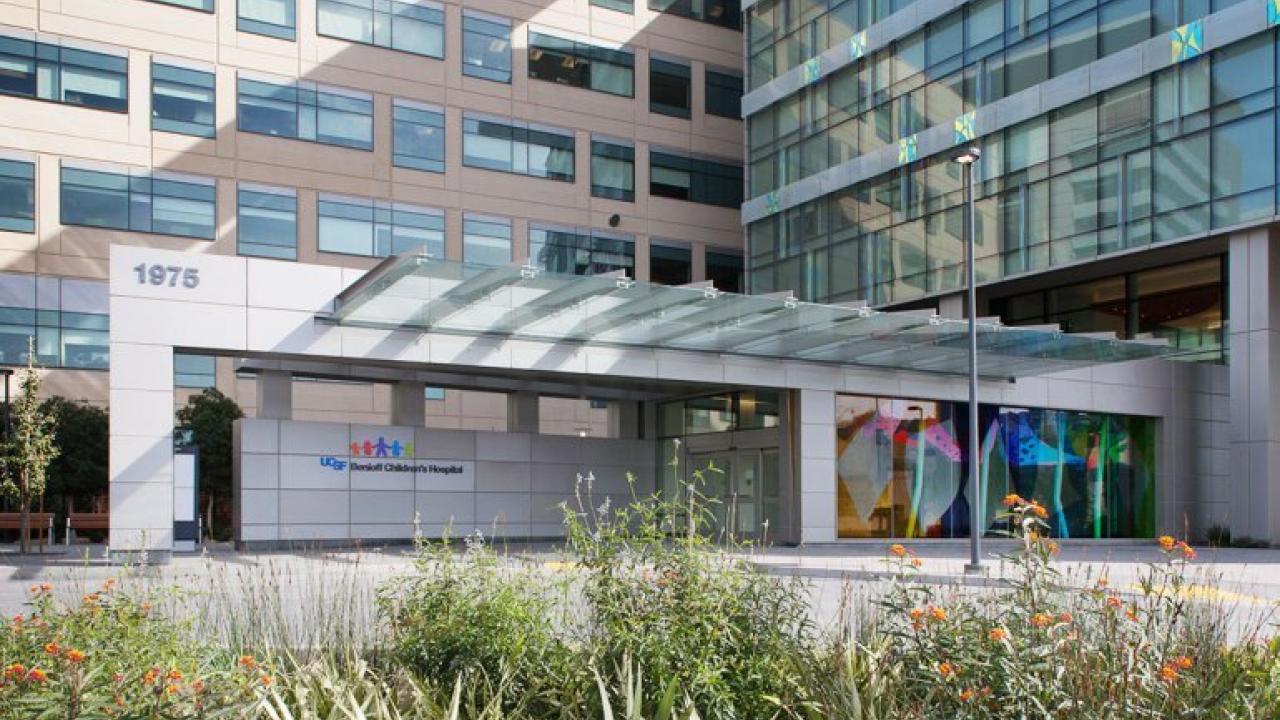
The entrance to the new UCSF Benioff Children's Hospital San Francisco at Mission Bay.
It offers whimsical works of art by celebrated artists, interactive exhibits designed by the Exploratorium and acres of rooftop gardens. When UCSF Benioff Children’s Hospital San Francisco moves to its new home at Mission Bay, it will even feature a fleet of robots that glide silently across hospital hallways bearing food trays or linens.
For most young patients, visits will be brief and occasional. But physicians like Kate Matthay, MD, who runs the pediatric malignancies program, recognize that for some patients visits may be lengthy and frequent.
"The hospital is child friendly and family friendly, and that’s important because sick kids need their families close by,” said Matthay, who has been working at UCSF Benioff Children’s Hospital San Francisco since her fellowship in 1979 and is herself the parent of three adults.

Kate Matthay's research has helped reduce the amount of invasive treatment that children with rare pediatric cancers are exposed to. Photo by Susan Merrell
Different nooks throughout the children's hospital are designed to intrigue and entertain.
Matthay is uniquely attuned to the needs of very sick children, because her patients include those with neuroblastoma, one of the most challenging pediatric cancers. Neuroblastoma is a rare malignancy of the nerve cells that usually starts in the adrenal glands, abdomen or near the spine by the chest or neck, spreading rapidly and aggressively in some patients. About 50 percent of patients present with advanced disease and require a bone-marrow transplant, follow-up therapy and lifelong specialized medical surveillance. Only 45 to 50 percent of patients over the age of 18 months with metastatic disease survive five years after diagnosis.
Matthay’s mission is twofold: She is committed to researching strategies that boost survival of neuroblastoma as well as other pediatric cancers with low cure rates; and she wants to identify the hallmarks of lower-risk disease that enable physicians to pare down treatment regimens, reducing side effects like hair loss, nausea and compromised immunity. More significantly, it will lower the risk of late effects, such as stunted growth, developmental delays and secondary cancers.
Identifying the Least Invasive Treatment
Matthay cites acute lymphoblastic leukemia (ALL), the most common and one of the most curable childhood cancers, as a roadmap for other cancers.
“We know that age and white blood count at the time of diagnosis are predictive of outcome for patients with ALL, but these factors don’t tell us the complete story,” she said.
So she’s been studying the genetic indicators that point to prognosis, like additions and deletions of extra chromosomes and genetic translocations.
“We give patients their first cycle of chemo and run their blood through a fluorescent flow cytometer, which tells us the number of leukemic cells found. This, together with information from their genetic profile, gives us a better idea about how to proceed with treatment,” said Matthay. Many patients have a predisposition toward cancer, such as a loss of a tumor-suppressor gene, she said.